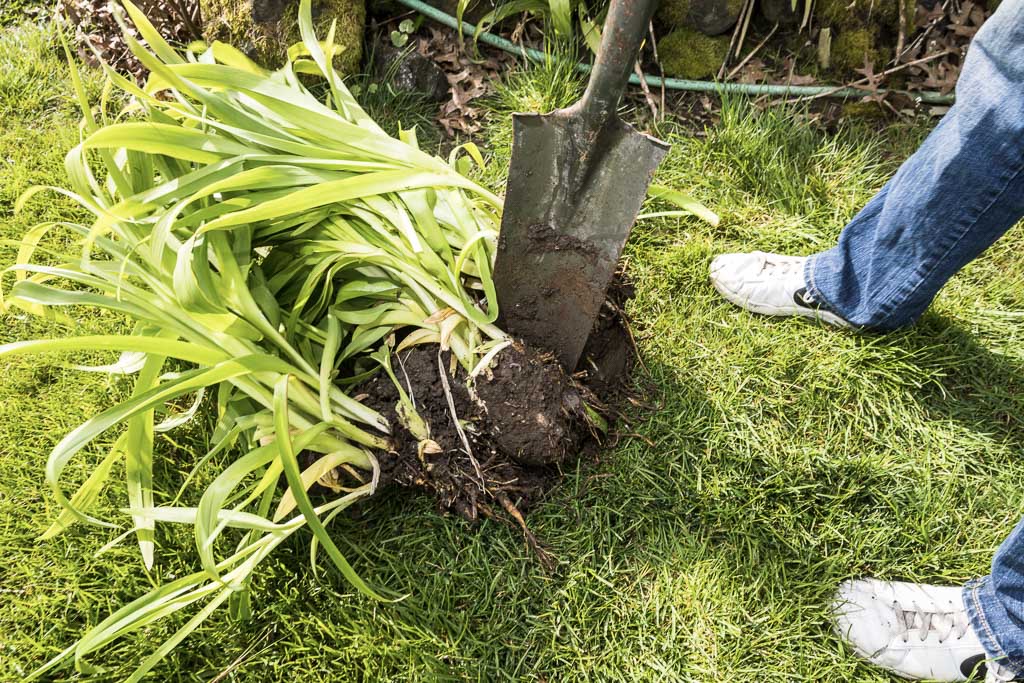How to: Dig Up, Divide, and Transplant Perennials
April 21, 2023
Where you live in the Pacific Northwest says a lot about the types of perennials that do well in your area. While it might be impossible to control climate, elevation, and geography, the way you dig up, divide and transplant those perennials can have a big impact on the look and productivity of your yard, whether you live in the suburbs or out on a handful of acres.
Defining a Perennial
The difference between a perennial and an annual is pretty simple. A perennial grows back every year while annuals die in winter and must be re-planted from seed or starts in the spring. Coastal employee, horticultural professional and lifelong gardener, Linda Woolsey simplifies it further, stating that perennials include any plant that grows back.
With perennials, you can leave them where they are and allow them to flourish year after year, or you can dig them up and transplant them. If they’re dividable, you can add them to several locations throughout your property.
Coastal Extra: Popular perennials include coneflowers, blanket flowers, clematis, sage, peonies, shrubs, roses, and a lot more. Annuals include sunflowers, petunias, marigolds, and bachelor buttons.
When to Transplant
The best time to transplant anything is in the fall, according to Linda. But spring is also okay if it’s very early in the season. The difference is in the root system and growth. If you transplant in the fall, the roots will have a chance to take off right at the start of spring. Transplanting in late spring or summer can kill off or severely shock your plants.
Dividing Perennials
There is a difference between a clump of lilies and a lilac bush when it comes to dividing. If your perennial has a deep, single root system, it cannot be divided. To transplant them, you must dig deep to get the bottom of the tap root. Additionally, if your plant grows from bulbs, each bulb is a new plant and cannot be divided. If the plant has an a large system of roots and runners, it’s likely easily dividable. Strawberries are a good example.
Once you’ve identified if your perennial can be divided, just use a shovel to cut the roots into 2-3 equal plants. Finally, dig down to get as much of the roots as you can. This will help the plant thrive in its new location.

Transplanting
Moving a perennial is usually about aesthetics, sunshine, or watering systems. For example, you might consider moving a shrub that is blocking other plants from getting water or sunlight. But, the most important part of any transplant is the hole. Depending on what you are transplanting, be sure the hole is double the width of the plant. Depth is also important, but a bit trickier. For a healthy transplant, Linda states that the ground around the transplanted perennial should be the same depth as the soil where it originated. In other words, it should be flush with the ground with no dipping or mounding.
The simple process goes like this:
- Dig your hole.
- Fill the hole with water and allow the water to recede into the ground.
- Put the plant into the hole and water again.
- Put soil around the plant.
- Tap the top of the soil down with your foot.
- Lightly water the top of the soil.
Coastal Tip: Give your new transplants extra water to help them along. This can help avoid shocking the roots, which can lead to far fewer blossoms for one season.
Coastal is Your Gardening Headquarters
Stop by Coastal for all of your gardening needs, including seeds and starts, hoses, shovels, bags of soil, fertilizers, and expert advice. While you’re there, spruce up your springtime wardrobe, lace up a new pair of boots, or get your pet a comfy bed for the deck.
